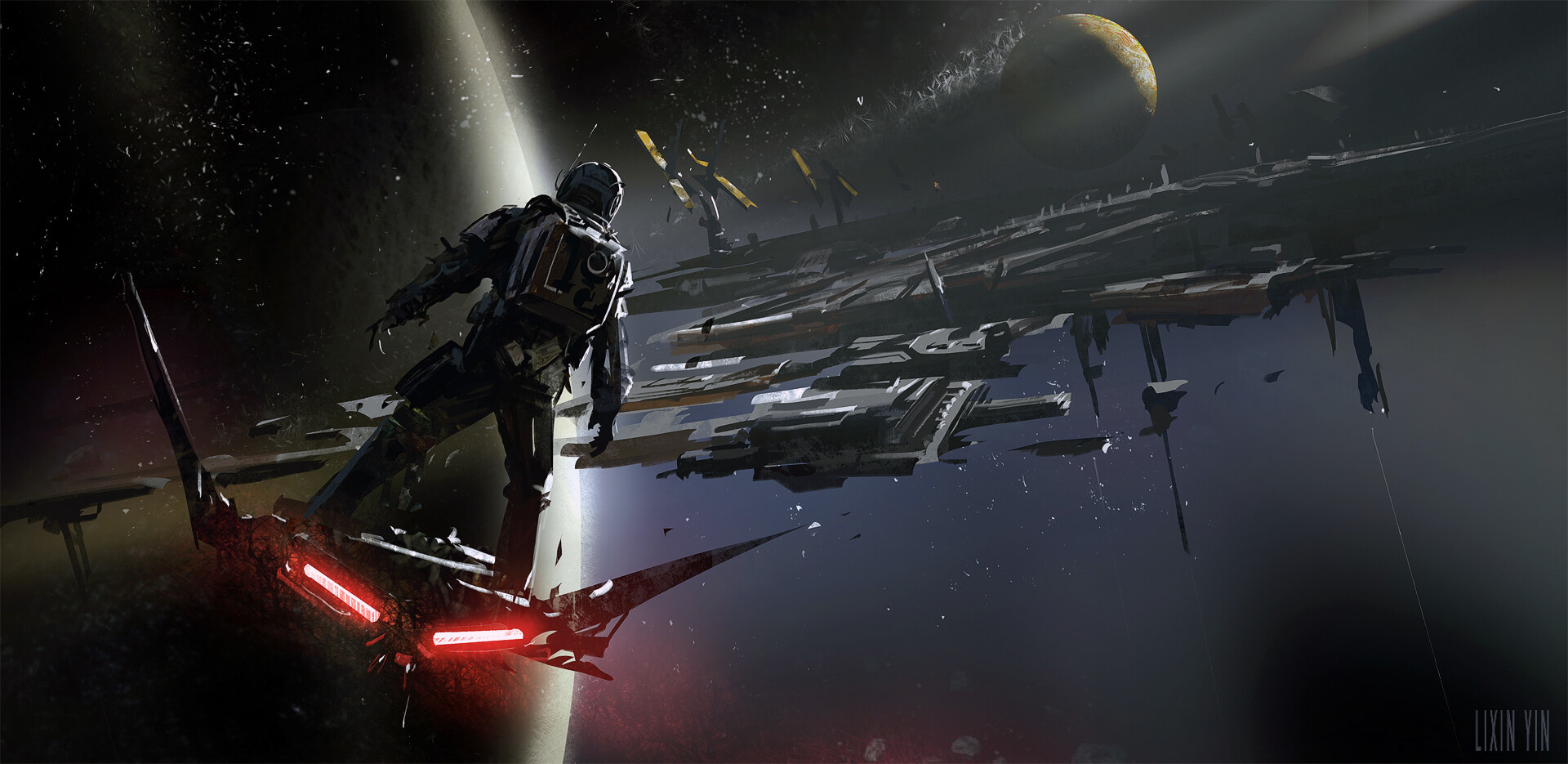AMCO
I'm Sorry Dave


OUT OF CHARACTER INFORMATION
Mercury-class Aerospatial Hoverboards are small, agile aircraft designed to be used while standing or seated on them. They can be produced as per the art, as large discs, or as smaller discs/boards made to be easily man-portable - the latter either decreases the amount of time the hoverboard is able to stay in the air or significantly increases the cost due to the need to splurge on an expensive power generator of some sort.
The most common uses for these hoverboards are fun in-atmosphere transportation and brief trips outside a spaceship - compared to cumbersome spacecraft, Aerospatial Hoverboards are perfect for doing exterior repairs or manoeuvring through derelict spaceships just begging to be looted.
While fast in atmosphere, it goes without saying that traversing interplanetary distances on a hoverboard is inadvisable.
- Intent: Space-capable hoverboards for the Open Market.
- Image Source: Concept Speedpainting (Nr. 2) by LiXin Yin
- Canon Link: N/A
- Permissions: N/A
- Primary Source: Velox-series Monocycle
- Manufacturer: The Globex Corporation | Vanguard Hypernautics
- Affiliation: The Globex Corporation | Vanguard Hypernautics
- Market Status: Open-Market
- Model: Mercury-series Aerospatial Hoverboard
- Modularity: Significant; size, aesthetics, materials, etc.
- Can be made small enough to carry under one's arm by decreasing the range/power or splurging on an expensive generator.
- Can be produced as larger discs used to move small groups; Autodiscs have up to six seats and function as autonomous taxis.
- Production: Mass-Produced
- Material: Duranium-Hexalloy
- Classification: Hoverboard
- Role: Reconnaissance
- Size: Small
- Weight: Average
- Armaments: None
- Defences: Average
- Light Shield Generator
- Manoeuvrability Rating: Extreme
- Speed Rating: Extreme
- Propulsion: Repulsorlift
- Minimum Crew: One Person or Autopilot
- Optimal Crew: One Person or Autopilot
- Passenger Capacity: Variable, usually N/A / 'hold on tight'.
- Cargo Capacity: Very Small
- Mercury-series Aerospatial Hoverboards utilise a combination of repulsorlift and alternate propulsion to travel in air and space alike with both speed and agility. A light shield generator is used to protect the operator from g-force, bad weather, and light weapons fire - it should not be expected to weather vehicle/starfighter-grade weaponry, nor to shrug off infantry-sized weapons. Discretion is the better part of valour.
- Move With Style: Aerospatial Hoverboards can travel at high velocities with impressive agility both in atmosphere and in space.
- Exposed Position: The shield is great for dampening g-force and blocking bad weather, but less great at weathering blaster cannons.
Mercury-class Aerospatial Hoverboards are small, agile aircraft designed to be used while standing or seated on them. They can be produced as per the art, as large discs, or as smaller discs/boards made to be easily man-portable - the latter either decreases the amount of time the hoverboard is able to stay in the air or significantly increases the cost due to the need to splurge on an expensive power generator of some sort.
The most common uses for these hoverboards are fun in-atmosphere transportation and brief trips outside a spaceship - compared to cumbersome spacecraft, Aerospatial Hoverboards are perfect for doing exterior repairs or manoeuvring through derelict spaceships just begging to be looted.
While fast in atmosphere, it goes without saying that traversing interplanetary distances on a hoverboard is inadvisable.





